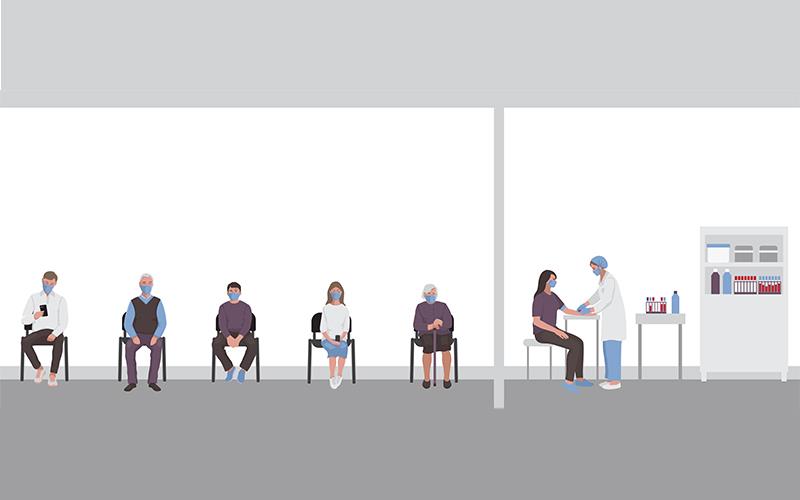More syphilis cases picked up with universal vs targeted ED screening





Relying on targeted screening models for syphilis in emergency departments (EDs) leaves a substantial number of active cases undetected, new research shows.
With regard to order-based models, a total of 76.4 percent of positive syphilis screens would be missed if screening was performed only for individuals who visited the ED for gonorrhoea or chlamydia testing, reported lead investigator Dr Kimberly Stanford from the University of Chicago Medical Center in Chicago, Illinois, US. [CROI 2025, abstract 160]
About a quarter of syphilis cases (24.4 percent) would go undetected if screening was limited to individuals who came in only for CBC testing. Even if screening was performed for all individuals who came in for any blood testing, 17.3 percent of syphilis cases would still be missed, Stanford noted.
“A lot of the new HIV diagnoses (between 24.1 percent and 68.7 percent) and the acute HIV cases (between 19.0 percent and 95.2 percent) would have been missed as well using these [order-based screening] models,” she added. “And all of those new HIV diagnoses were among the people who had syphilis. So, that’s a [missed] co-diagnosis of HIV and syphilis.”
Similar instances of missed diagnoses were identified with population-based models. Between 77.2 percent and 97.6 percent of positive syphilis screens and between 85.5 percent and 97.6 percent of new HIV diagnoses would not be caught if screening was performed only for people with positive pregnancy tests in the ED, those with diagnosis code for opioid or substance use, or women of reproductive age (<50 years).
Pros and cons
There are merits to using targeted syphilis screening in the ED. Stanford pointed out that order-based models, particularly, are straightforward to automate in the electronic medical record and that they reduce workload burden for patients who are already undergoing blood draw for other reasons. On the other hand, population-based models target the highest priority populations and, in turn, reduce workload of blood draws and follow-up, she added.
The major drawback is the many missed diagnoses overall, Stanford said. This is especially true when screening is limited to people who are visiting the ED to get tested for sexually transmitted infections and to people with a diagnosis code for opioid or substance use, since this diagnosis code is not used in the ED unless it is related to the patient’s care, she explained.
Furthermore, only a small portion of pregnant people are getting screened, since many of them learned of their pregnancy right after the blood draw, Stanford continued. “And you’re missing the partners if you’re only targeting pregnant women for screening.”
Stemming epidemic
With syphilis cases rising, ED screening is increasingly recognized as a crucial strategy for prompt diagnosis and intervention. This approach, according to Stanford, casts a wider net to include communities with limited access to care, particularly people at risk of syphilis who are only able to access the healthcare system through an ED visit.
“While implementation of universal ED screening may require additional resources and infrastructure, it may be the most effective strategy to address the syphilis epidemic in high prevalence communities facing major healthcare disparities,” she said.
Study details
For the study, Stanford and colleagues used data from a large, urban, tertiary care hospital in Chicago wherein a routine, opt-out, syphilis screening program for all ED patients under age 65 years was implemented in 2019.
The analysis included 37,289 individuals who were screened for syphilis in the ED during the 2-year period after implementation of the screening program. A total of 624 (1.7 percent) active syphilis cases were diagnosed during this period. Syphilis was defined by a combination of positive serology, rapid plasma regain (RPR) titres, and clinical history obtained from chart review.